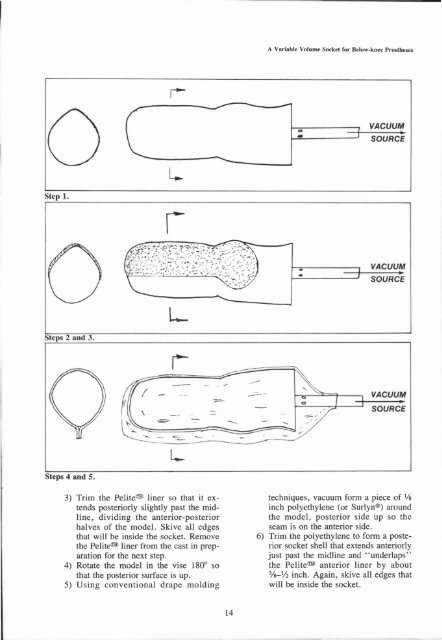A Variable Volume Socket for Below-knee Prostheses
A Variable Volume Socket for Below-knee Prostheses
A Variable Volume Socket for Below-knee Prostheses
You also want an ePaper? Increase the reach of your titles
YUMPU automatically turns print PDFs into web optimized ePapers that Google loves.
Step 1.<br />
Steps 2 and 3.<br />
Steps 4 and 5.<br />
3) Trim the Pelite(tm) liner so that it extends<br />
posteriorly slightly past the midline,<br />
dividing the anterior-posterior<br />
halves of the model. Skive all edges<br />
that will be inside the socket. Remove<br />
thePelite(tm)liner from the cast in preparation<br />
<strong>for</strong> the next step.<br />
4) Rotate the model in the vise 180° so<br />
that the posterior surface is up.<br />
5) Using conventional drape molding<br />
techniques, vacuum <strong>for</strong>m a piece of 1/8<br />
inch polyethylene (or Surlyn®) around<br />
the model, posterior side up so the<br />
seam is on the anterior side.<br />
6) Trim the polyethylene to <strong>for</strong>m a posterior<br />
socket shell that extends anteriorly<br />
just past the midline and "underlaps"<br />
the Pelite® anterior liner by about<br />
3/8-1/2 inch. Again, skive all edges that<br />
will be inside the socket.
















